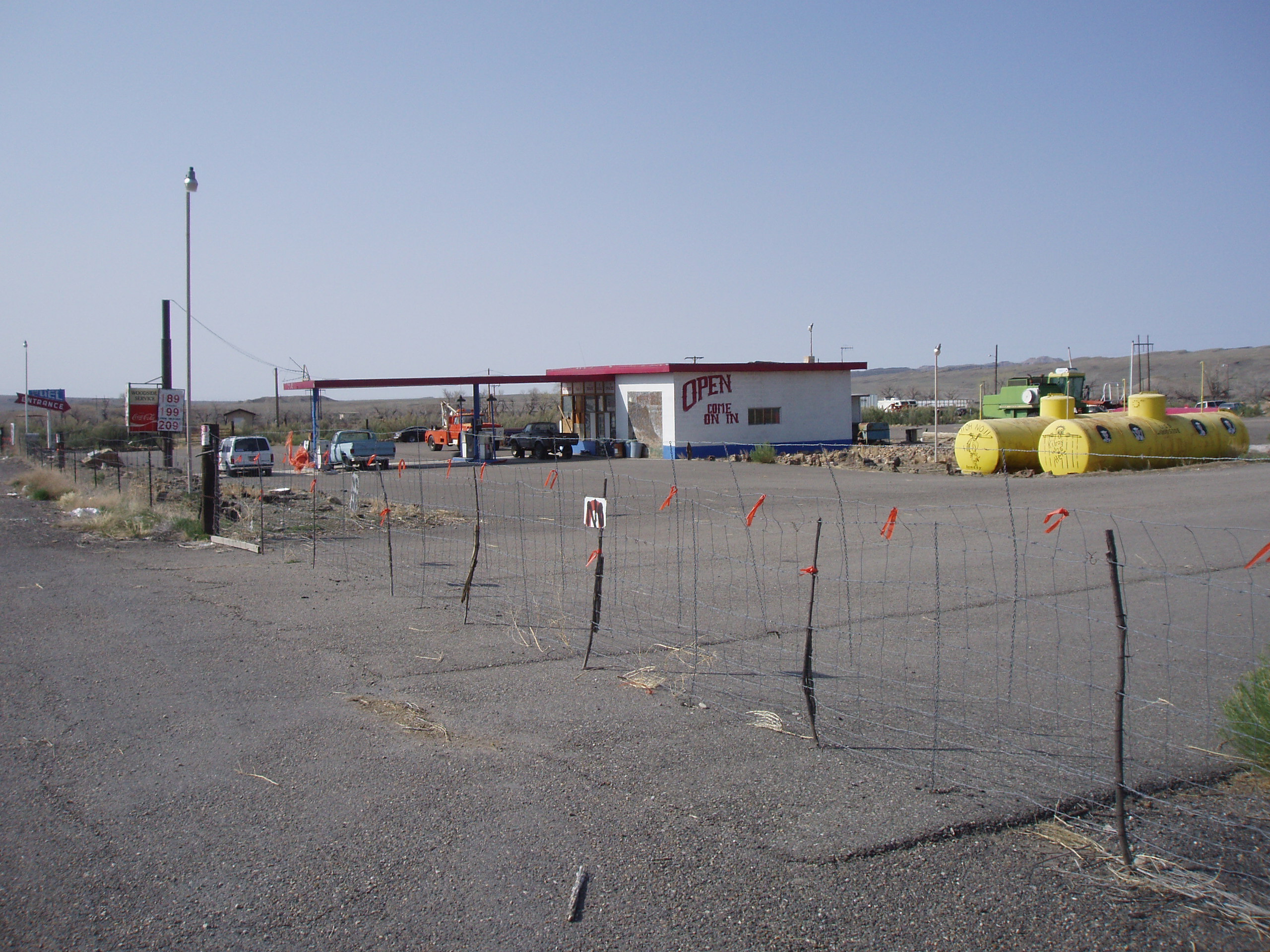- Woodside, Utah
thumb|The_roadside_filling station at Woodside] Woodside is aghost town located on the west bank of thePrice River in the nearly uninhabited eastern part of Emery County,Utah ,United States . Its fenced-infilling station is one of the only signs of human activity along the lonely stretch of U.S. Route 6 between Wellington and Green River.History
Construction on the site began with a
Denver and Rio Grande Western Railroad bridge andwater stop . The area's first resident was a local prospector named Henry H. Hutchinson, who settled here in 1881. Other homesteaders arrived the next year and started digging anirrigation canal. Attracted by relatively abundant water and an extensive growth ofcottonwood trees, they founded a settlement known as "Lower Crossing".cite book | last = Geary | first = Edward A | title = A History of Emery County | series = Utah Centennial County History Series | year = 1996 | month = January | publisher = Utah State Historical Society | location = Salt Lake City, Utah | pages = pp.110–111 | isbn = 0-913738-05-0 ] As the town grew, adding a few stores and ablacksmith shop, it was renamed "Woodside" for the cottonwood groves.cite book | last = Carr | first = Stephen L. | title = The Historical Guide to Utah Ghost Towns | edition = 3rd edition | origyear = 1972 | origmonth = June | year = 1986 | publisher = Western Epics | location = Salt Lake City | pages = p.86 | isbn = 0-914740-30-X]One of Woodside's biggest challenges was the Price River itself. Before the construction of
Scofield Reservoir the streamflow was highly variable, peaking early and nearly drying up by late summer. The river's largedrainage basin also meant even a distantcloudburst could bring a destructiveflash flood . Despite these problems the town continued growing. A hotel and stockyards were built adjacent to the railroad station, and Woodside became a supply point for neighboring ranches. A schoolhouse built in 1892 served as a town gathering place. By 1900 the population stood at 114 and it peaked around 300 in the next twenty years.In the late 1920s Woodside's livestock shipping facilities and railroad station were taken awayGeary, p.308.] when the railroad consolidated much of its operations in Helper. This blow was followed by severe
drought s in the 1930s, and by 1940 the population dropped to 30.In the 1940s Woodside became a minor tourist attraction. In the 1880s the railroad had dug a large
water well here, which had later turned into a cold bubblingmudpot driven by naturally-occurring pressurizedcarbon dioxide gas. The hole was developed into a cold watergeyser , along with a filling station, store, and cafe. The cafe and store burned down around 1970, and the geyser and filling station are the only remnants of Woodside. The geyser formerly spouted as high as convert|75|ft, but is much lower now. [cite book|last = Chronic | first = Halka | title = Roadside Geology of Utah | series = Roadside Geology Series | date =January 1 1990 | publisher =Mountain Press Publishing Company | location =Missoula, Montana | isbn = 0-87842-228-5 | pages = p.42] Ahistorical marker telling the town's story sits just inside the fenced area, where the reclusive owner keeps a small herd ofllama s.References
External links
* [http://www.uweb.ucsb.edu/~glennon/crystalgeyser/ Cold Water Geysers (Woodside Geyser, Utah)]
* [http://ghostdepot.com/rg/mainline/utah/woodside.htm Woodside Utah] at GhostDepot.com
Wikimedia Foundation. 2010.

